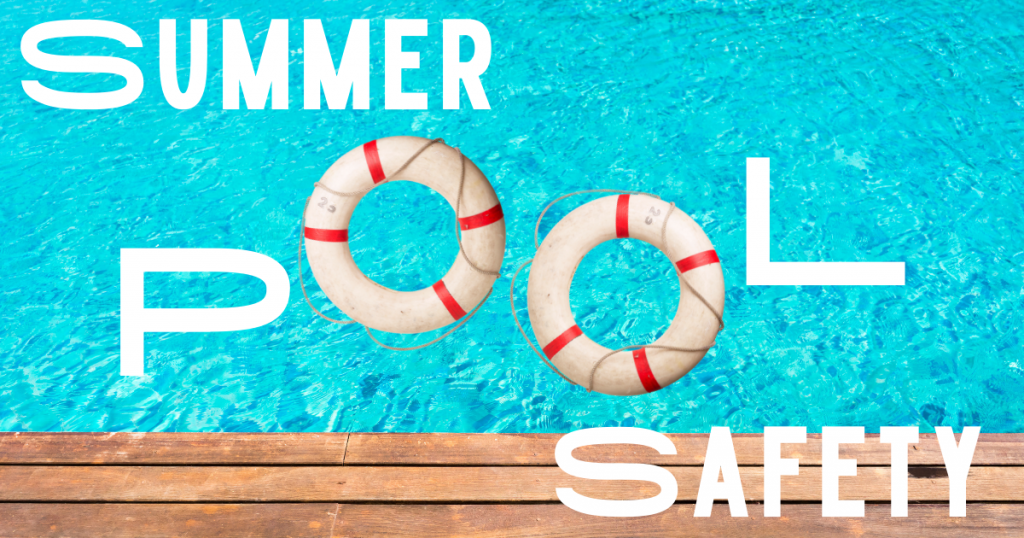
Enjoying the cool splash of a swimming pool is one of the best feelings one could have during a heat wave, especially in the summer season. But the pleasure of the swimming pool comes with risks. To ensure your safety and the safety of the people around you, check out our tips and pool safety best practices for a fun summer.
Always Attend to Children & New Swimmers

Most people love to swim or want to give it a try at some point in life. Considering humans are not born swimmers like aquatic animals, it is important to monitor and guide new swimmers as they learn, especially children.
According to StopDrowningNow.org, children ages 1-4 years, followed by children 5-9 years, are most at risk for drowning. The majority of the fatalities take place at home or at a pool owned by family or friends. Because drowning can happen in a matter of seconds, it is important to stay vigilant anytime water is near.
One of the most important pool safety best practices is to make sure that someone always has an eye on kids and new swimmers in the water. We recommend assigning a “water watcher.” A water watcher is the adult responsible for monitoring the pool and swimmers- like a designated driver. It is a good choice for a public or private swimming pool, even when there are lifeguards and other people present.
Avoid Drains

Swimming pools have drains that allow water and debris to flow out of the pool. Although drains are necessary to maintain a clean pool, swimmers should exercise caution around them. While swimming, hair, limbs, jewelry, or swimsuits can get stuck in drains or suction openings. This situation can be extremely dangerous, especially for children, as the swimmer may not be powerful enough to free themselves from the suction of the drain. Remind your swimmers to stay clear of drains and openings, and make sure that a water watcher is on hand in case someone needs help.
Install Safety Fencing Around Pool Areas

One step to prevent unattended children and pets from accessing the pool is to install barriers or fencing. In many communities, pool fencing is a requirement. In some cases, however, homeowners may need to add fencing if the home was built before pool safety requirements were in place. Check your local laws for guidelines on appropriate fencing to make sure your new or existing fence meets requirements. Poolsafely.gov recommends that fencing should be at least 5 feet or higher with tight spacing between vertical pieces. This helps prevent children from climbing over the fence or squeezing through the vertical beams of the pool fence.
Other protective measures such as door alarms, self-closing doors, and self-latching locks can further prevent access to the pool. Double check the perimeter of the fence to make sure there are no gaps or structures that can be used to breach the fence.
Remember, pool fences and barriers are not 100% child proof- but they do provide an extra blanket of protection.
Provide Adequate Safety Signage & Warnings
A big part of pool safety is keeping it top of mind and reminding all swimmers and non-swimmers to be safe in pool areas.

Adequate signage should be made available, visible, and easy to understand for anyone in the pool area. These warnings and signs provide polite guidelines for new swimmers and children to help keep them safe while enjoying the water.
Select Personal Flotation Devices
Wearing life jackets or other personal flotation devices (PFDs) can be a great choice, especially for beginners and children.

Though these devices do not serve as a replacement to a lifeguard or water watcher, they can assist swimmers as they build their swimming skills and confidence. Ensure life jackets and PFDs are worn appropriately, whether in a personal or public swimming pool. Take care in selecting a life jacket or PFD that can support the swimmer’s weight and height.
Keep the Pool Area Clean

Our last pool safety best practice: dedicate a little time to keeping your pool and swim area clean. Dust, leaves, and other debris can make the area around the pool slippery, which poses a risk for falls and accidental dips in the pool. Additionally, imbalances in chlorine and pH levels in pool water can be hazardous. Frequently check both chlorine and the water’s pH level, especially during the summer. The right balance is necessary to kill germs and keep your pool sparkling clean.
Have Fun!
Although this list does not include all the possible recommendations for pool use, we hope it reminds you to stay vigilant around water this summer. With safety top of mind, everyone can enjoy their summer swimming experience to the fullest!
